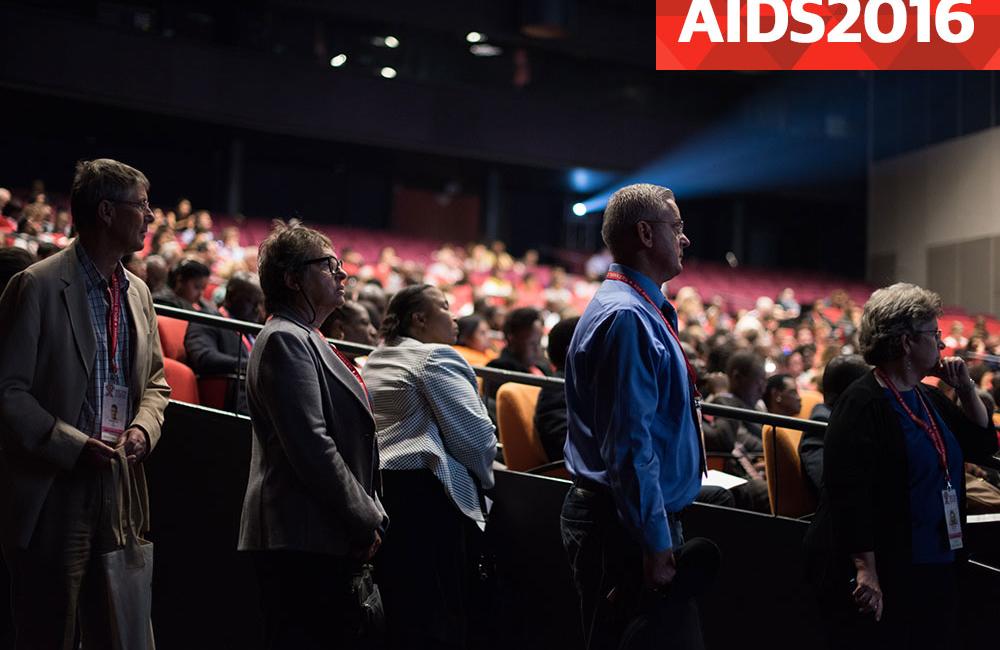
The use of the shortened 9-month treatment regimen for multidrug-resistant tuberculosis (MDR-TB), known as the ‘Bangladesh regimen’ has shown to be successful in 83% of children and adolescents diagnosed with rifampicin-resistant (RR) TB.
The findings were presented at TB2016, a two-day pre-meeting focused on the intersection between TB and HIV in the run up to the 21st International AIDS Conference in Durban, South Africa.
A second study presented at the meeting showed that the antibiotic levofloxacin can be used to treat MDR-TB in children.
TB treatment for children remains a neglected area, especially the diagnosis and treatment of drug-resistant TB (DR-TB) in children. Challenges include a lack of research in TB in children, a lack of proper dosing recommendations and formulations for children, a high cost of treatment and a growing gap in access to treatment for children each year. Treatment regimens for children also take up to two years, creating the need for research in shorter regimens for children.
The shortened regimen for children study was conducted during the inclusion period of an observational study conducted among adults in nine African countries (Benin, Burkina Faso, Burundi, Cameroon, Côte d'Ivoire, Niger, Central African Republic, Democratic Republic of Congo and Rwanda), according to findings presented by Bassirou Souleymane from Action Damien Niger.
“The regimen for treatment of multidrug-resistant tuberculosis (MDR-TB) has been more than 80% effective in adults in different settings, but its effectiveness and tolerance in children/adolescents is poorly documented, in the context of few effective treatment options for children with TB,” said Souleymane. The nine-month regimen had been shown to cure 82% of cases in adults in an African study, presented at the 46th Union World Conference on Lung Health in 2015.
Treatment was successful in 83% (56% cured, 27% treatment completed), of the 48 children (less than 18 years of age) that were started on treatment with the Bangladesh regimen. Twenty-three (48%) were girls, 5 (10%) were aged 0-9 years, 9 were (19%) HIV-positive, and 30 had been (63%) previously treated for TB.
There was no significant difference in successful treatment outcomes by age (85% in 15 to 17 year-olds vs 80% in 0 to 9 and 10 to 15 year-old children, p < 0.05). The case fatality rate was higher among children living with HIV (22% vs 5% in HIV-negative children), but treatment success was similar according to HIV status among surviving children (100% vs 92%). Adverse events were reported in 62% of the children, none of which was severe. Among 24 children assessed after treatment termination, 21 were alive with confirmed treatment success, two had died and one had recurrence.
The Bangladesh regimen is made up of four months of kanamycin, moxifloxacin, prothionamide, isoniazid, clofazimine, ethambutol, and pyrazinamide (abbreviated as 4Km Mfx Pto H Cfz E Z), followed by five months of moxifloxacin, clofazimine, ethambutol and pyrazinamide (5 Mfx Cfz E Z).
“Treatment results of the Bangladesh regimen appear excellent in children and adolescents, regardless of their HIV status, with very limited side effects. This should encourage countries to adopt this shortened MDR-TB treatment regimen for children,” said Souleymane.
Levofloxacin safe and tolerable treatment for MDR-TB in children with or without HIV
The fluoroquinolone levofloxacin (15-20 mg/kg) was found to be safe and well tolerated in children (under 14 years old) in long-term use, according to a study presented by Anthony Garcia-Prats of the Desmond Tutu TB Centre at Stellenbosch University, South Africa, at the TB2016 pre-conference.
The safety and tolerability of multidrug-resistant treatment is also not well documented for children. Children with MDR-TB are routinely treated with six TB drugs, including levofloxacin (at 15-20mg/kg) in those under 8 years and moxifloxacin in children above 8 years. The fluoroquinolone levofloxacin is a key component of MDR-TB treatment in children, and is included in two phase 3 trials of preventive therapy in MDR-TB exposed adults and children. Concerns about fluoroquinolone safety in children have persisted and there is limited prospective data in children, particularly with long-term use.
Of the 70 children (0 to 14 years) with MDR-TB treated with levofloxacin, the most frequent adverse effects were vomiting at 24 events in 19 children (0.345 events/person-year) and 27 events of ALT elevation in 22 children (0.394 events/person-year). There were no arthritis events and only three grade 1 arthralgia events in three children (event rate 0.044 events/person-year). There were three grade 3 and five grade 4 adverse events, seven of which were ALT elevation, of which none were attributed to levofloxacin and were all resolved without complication and one grade 3 headache which was possibly related to levofloxacin. No adverse event resulted in permanent levofloxacin discontinuation.
The median age was 2.1 years (IQR: 0.4-7.3 years), 38 (54%) were male, 12 (17%) were living with HIV, and 16 (23%) were underweight-for-age. The total person-time of observation was 68.5 years (median time 11.6 months; IQR 9.2-14.7m).
“This study provides additional support for the inclusion of levofloxacin in TB treatment and prevention regimens in children,” said Garcia-Prats.
Souleymane B et al. Treatment of multidrug-resistant tuberculosis (MDR-TB) in children and adolescents with a 9-month regimen in Africa. TB2016 pre-conference, 21st International AIDS Conference, Durban, abstract 213, code O12, 2016.
Garcia-Prats A et al. Safety and tolerability of levofloxacin in HIV-infected and -uninfected children treated for multidrug-resistant tuberculosis, TB2016 pre-conference, 21st International AIDS Conference, Durban, abstract 101, code O11, 2016.
